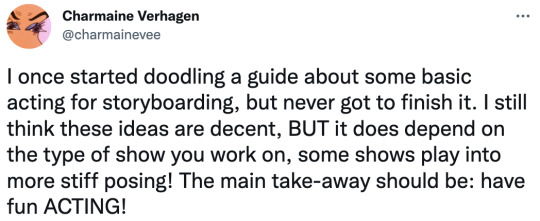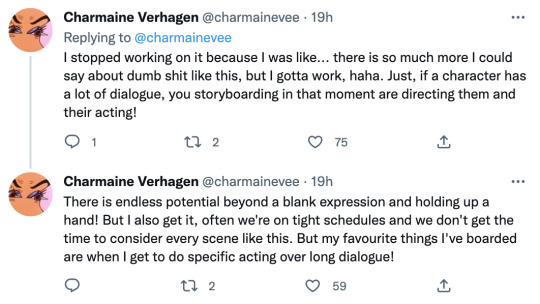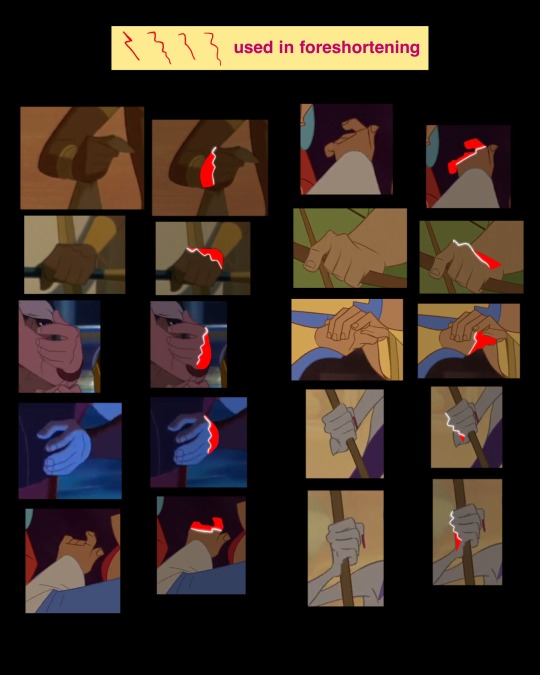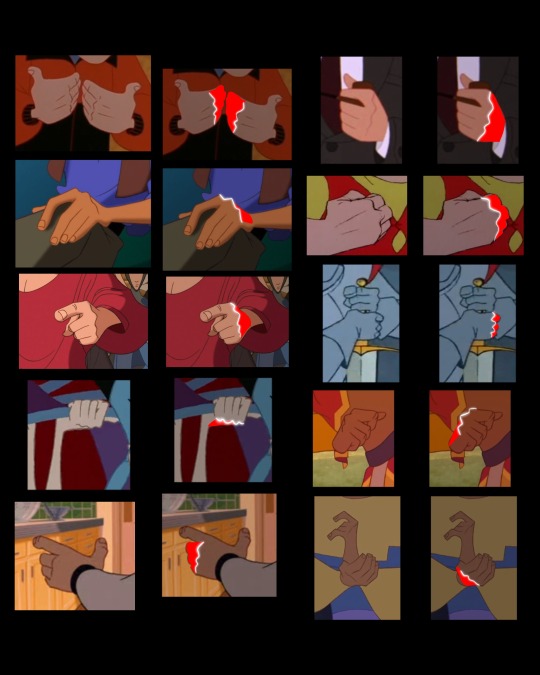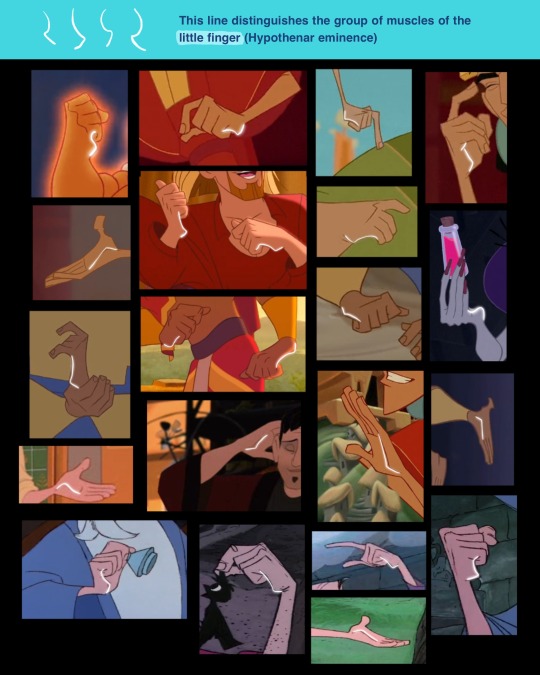Ask someone with an MFA in Animation anything. I do my best to reblog quality content about animation.
Don't wanna be here? Send us removal request.
Text
self referential timing chart anim. i need to touch grass lol
2K notes
·
View notes
Text

Aaaaagggggghhhh2h2222222222HGGGGBBBBBBbbhhg12322
14K notes
·
View notes
Video
youtube
MomoCon 2023 - The Magic of Don Bluth
7 notes
·
View notes
Text
i hate that every time i look for color studies and tips to improve my art and make it more dynamic and interesting all that comes up are rudimentary explanations of the color wheel that explain it to me like im in 1st grade and just now discovering my primary colors
153K notes
·
View notes
Photo

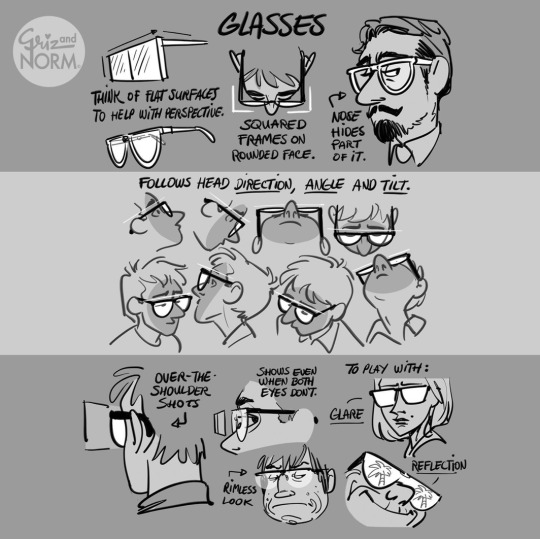



Drawing tips by Disney artists Griz and Norm Lemay
31K notes
·
View notes
Text
Multiple Questions
I am getting into traditional animations and I saw the mickey mouse documentary and have some questions. How are clean up sketches created? I see that they make rough sketches first but in production drawings the lines are so clean and I don't know how they do it on a lightbox. Second question is what pencils did the animators use in that documentary and what H or B was it? Why do animators use colored pencils? Why would a red pencil be used or a blue pencil during animation in disney?
Hi, thanks for the question!
Clean up drawings are made by tracing over the original sketch, or cleaning up the sketch until it looks less rough. That's all it is! You put the original drawing on the light table, put a blank sheet of paper on top of it, and you do your best to trace the important details from the original drawing onto the new one.
Most animators working on paper probably use a Number 2 HB pencil. And when animators use a colored pencil in their animation it's to help the clean up and the ink and paint department know which lines should be a black outline, and which one should be a color instead. Usually colored pencil lines are used for things like skin/fur markings or shadows and highlights. Things you wouldn't want to outline with black. Hope that helps!
1 note
·
View note
Text
I don’t know how to animate a wasp swarm
Hi! My name is Daniel and I am from Costa Rica, I study art at University of Costa Rica and I’m making a video project with two mates where I have to animate a wasp swarn, the thing is I don’t know how to do that and also my time is running out. It would be fantastic if you can tell me how to do it in the easiest way possible, thank u so much :)
Hi Daniel! The thing about animation is that it's not a fast process! The best advice I can give you is to look into using particle generation in a program like adobe after effects. Try searching for tutorials on youtube like "how to make a swarm of bugs in after effects" You will have to watch several of them to find the one that gives you the results you are looking for. Good luck!
youtube
0 notes
Text
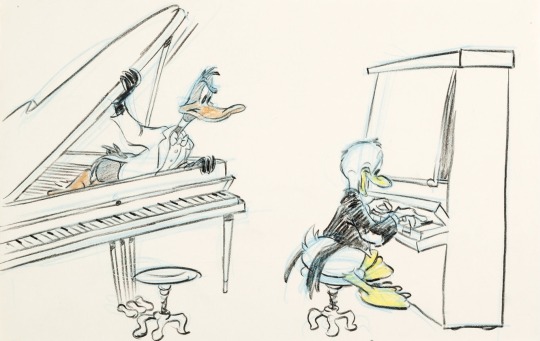

Dueling Pianos Story Sketches “Who Framed Roger Rabbit” (1988)
795 notes
·
View notes
Note
I have an old Cartoon Color product catalog that I saved. I went to school around the same time as Fable, but my school made us produce a 60 second short film in our first year using actual cels and paint, and an animation camera.
Sorry this photo isn't the best, but honestly the colors in the print are hard to distinguish. They aren't an accurate swatch.
If you're really desperate to find accurate colors you might be able to hunt down a swatch sample ring, which is actual pieces of acetate with cel paint on them.

Hi Fable! I'm doing a bit of research for a project and I'm curious if you know anything about the specific brand of cel paint that animators would use when painting cels around the 90s/early 2000s. Specifically I'm looking for a color palette that accurately replicates those shades. Any ideas?
Thanks,
-Foxby
I can't help you much for specificity. Ive never used cel paint myself, it was already out of most animation education by the time I entered college (2006), but I believe that acrylic and vinyl is what you're looking for since they lay down smoothly, are opaque, flexible, and relatively inexpensive.
Upon some research, likely the provider of vinyl paint was "Cartoon Colour" in California. Unfortunately they are now closed. I suppose vinyl paint is not a sustainable business in today's digital-based pipeline models.
I suggest sampling colors directly off of the films you're inspired by. The precise shades aren't going to be quite accurate once run through whatever camera and jpg filter required to get it visible on your computer. But it's better than no option whatsoever.
9 notes
·
View notes
Text
Question about file types
Hi there! I was wondering if you could talk about exporting file types in an optimal way so that they can be used between programs. For example, let's say I want to do my actual animation in Opentoonz. I do all of my roughs, cleanup, and tweening there. But I want to color in Clip Studio Paint. Which file type would I export from OT to do this? As a follow-up, are there any programs that don't play well together because of file compatibility issues?
Unfortunately I've never used Opentoonz so I don't really know what formats it can save in. When in doubt, export as an image sequence with a transparent background? And I don't really know of any programs with specific export mismatches... Generally you can't open a program's proprietary file format in another program, or if you can, you should expect some issues. Clip Studio and many other programs can open Photoshop files for example. Sorry I can't be of more help! Good luck!
0 notes
Text
Do you need to learn animation to create a screenplay for an animated series?
No, you don't need any specific education to do that job, however getting someone to produce your screenplay is not easy! There's industry pros who have decades of experience that can't get their dream projects off the ground. Your best bet is to do lots and lots of writing, and get into writing scripts in general. Then getting into writing for animation. But keep in mind a lot of animated shows don't have traditional scripts, and if you want to "write" animation you may need to become a storyboard artist instead.
0 notes
Text
Quick question about the animation process, shouldn't revisions be done after backgrounds have been designed/established?
Currently in my college animation club we're working on a short film and something about the process has felt off to me. We started by doing story pitches, after choosing a story we finalized character designs and the story, then went into storyboards, after storyboards we did revisions (though there was no communication between the storyboard artist and the revisionist) now we're working on actually animating each segment but some of the background designs haven't been finished, they seemed to have fallen to the wayside? Shouldn't they have been finalized along with the character designs?
Hi! Thanks for the question.
Obviously this depends on the type of animation and the specific production, however in most cases yes, you would want your backgrounds completed or at least you want the 1st draft of them finalized before you start doing animation.
What I mean by this is, you want your backgrounds to be locked before you start animating so that you understand the space that your animation is moving through.
However, if it's your first time animating and the person in charge of backgrounds is unsure about what to draw (because maybe how the animation is going to look is still vague), you may need to do some back and forth to figure out how the background needs to be while first draft of the animation is happening. You should get that BG locked in as soon as possible though, and certainly before you start doing major animation revisions!
Hope this helps!
0 notes
Text
Hi! I'm interested in animation and I've been planning to do my very first animation project!
I'll basically redo the first Sailor Moon transformation sequence to make the design more manga accurate. I used a media viewing program to turn all the frames captured from the original video into pictures on a folder for me to trace, and there are two folders.
In one folder, I set for the program to save 1 image to every 5 frames, which resulted in 198 images, and in the other folder, I set for it to save 1 image to every single frame, which resulted in 431 images.
The transformation sequence is 40 and a half seconds long and I'd like for it to have 24 fps, and I'd like to ask, is the amount of frames I have enough to do that? Thank you! Hi! This is a fun question. I haven't had to do this kind of frame math in awhile. So, if the sequence is 40.5 seconds long, that means there are 972 frames in it. That's a lot different from the numbers you have. I'm assuming the program you used to capture your frames is somehow only creating an image when it detects a big enough change in the video to identify it as a new frame? If so, then the sequence was mostly animated on 2's, which means each frame is repeated twice. 972 divided by 2 is 486, which is a lot closer to your second number. However, it's still not exactly the same. That's why I say the sequence is likely animated "mostly" on 2's, there are probably a few held sequences where they remain on one drawing for multiple frames - this is done to create emphasis and timing. If you copy the frames you have and play it back at 24 fps, you'll have a 18 second sequence instead of a 40 second sequence. Make sure to repeat each frame at least twice, and then you'll have to watch and rewatch the original sequence many times to find the spots where the held frames are. The easiest way to do this will be to go through the sequence frame by frame and just count how many times each frame remains on screen. Or you can just adjust your framecount manually as you work until the timing looks right to you! Either way good luck on your project, send me a link when you're done, I'd love to see it! :)
1 note
·
View note
Photo



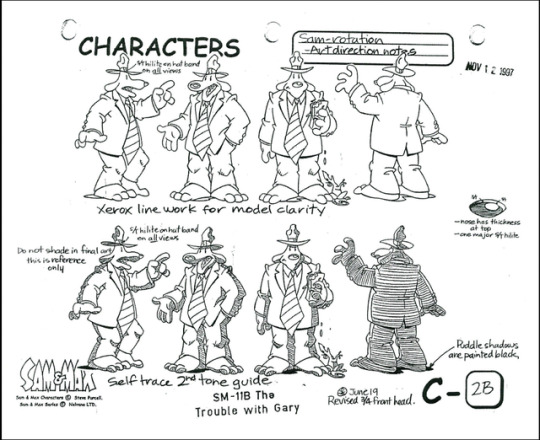
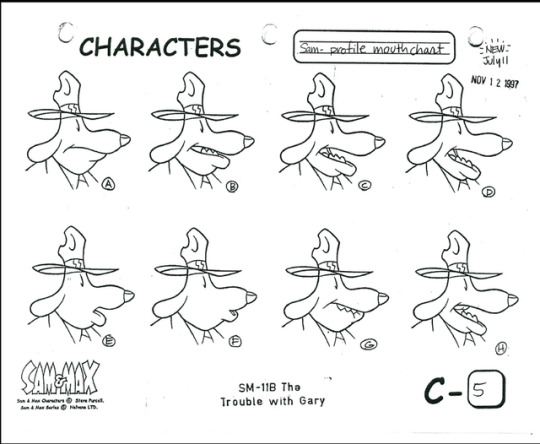
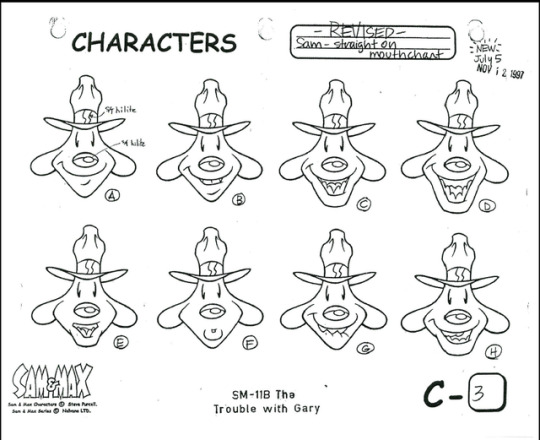




Model sheets for Sam and Max. Great characters, that have been the stars of several games and (web)comics. They were created by Steve Purcell way back in the late 1980s.
4K notes
·
View notes

